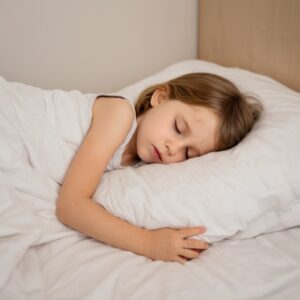Bedwetting, also known as nocturnal enuresis, is a common issue affecting children over the age of five. It refers to involuntary urination during sleep and can be a source of stress and embarrassment for both children and their families. While bedwetting is not harmful to a child’s physical health, it can impact self-esteem and social interactions. Fortunately, effective treatments and supportive strategies are available to help children overcome this condition.
What Can You Do at Home?

It is crucial for children to understand that bedwetting is not their fault. Scolding or punishing a child will not resolve the issue and can worsen their emotional distress. Here are some helpful strategies:
- Provide Reassurance: Emphasize that bedwetting is common and that they are not alone.
- Prepare for Accidents: Keep extra pajamas, bedding, and waterproof mattress covers readily available for easy changes during the night.
- Limit Evening Fluids: While not scientifically proven, some families find it helpful to limit fluid intake in the hours before bedtime.
- Encourage Regular Bathroom Habits: Ensure the child urinates before going to sleep.
- Avoid Frequent Nighttime Waking: Unless specifically recommended by a healthcare provider, avoid waking the child to urinate, as this can disrupt their sleep patterns.
When to Seek Professional Help
Consult a pediatrician or family doctor if:
- The child expresses a desire to stop bedwetting.
- The child is six years or older and still wetting the bed regularly.
- Bedwetting occurs after a period of dryness.
- The child experiences daytime wetting, painful urination, or increased thirst.
- There are concerns about the child’s emotional well-being.
It is important for the child to be actively involved in the decision to seek treatment. Forcing treatment on a child who is not motivated can be counterproductive.
Diagnosis and Evaluation
A healthcare provider will conduct a thorough evaluation to determine the underlying cause of bedwetting. This may include:
- Review of bladder habits and fluid intake.
- Urine sample to rule out infection or diabetes.
- Assessment of bowel habits to identify constipation.
- Medical history and physical examination.
- Evaluation for sleep-related issues, such as snoring or sleep apnea.
- Family history of bedwetting.
Treatment Options
Treatment for bedwetting typically begins when a child is six years or older and may include:
- Bedwetting Alarm (Enuresis Alarm): This device consists of a moisture sensor placed in the child’s underwear or on a pad. When the sensor detects urine, it triggers an alarm to wake the child. Over time, the child learns to associate the sensation of a full bladder with waking up. Bedwetting alarms are considered the most effective long-term treatment for bedwetting.
- Medication: Desmopressin is a synthetic hormone that reduces urine production during sleep. It can be helpful for short-term management, such as when a child is sleeping away from home. However, bedwetting often returns when the medication is stopped.
- Combination Therapy: In some cases, a combination of bedwetting alarm and desmopressin may be recommended.
Causes of Bedwetting
Bedwetting is often caused by a combination of factors, including:
- Genetics: Bedwetting tends to run in families.
- Hormonal Imbalance: Some children do not produce enough vasopressin, a hormone that reduces urine production at night.
- Small Bladder Capacity: The child’s bladder may not be large enough to hold all the urine produced during the night.
- Difficulty Arousing from Sleep: The child may not wake up when their bladder is full.
- Underlying Medical Conditions: In rare cases, bedwetting may be caused by a urinary tract infection, constipation, diabetes, or a kidney problem.
Takeaway
Bedwetting is a common and treatable condition. With patience, understanding, and appropriate interventions, most children can achieve dryness and improved self-esteem. It is important to involve the child in the treatment process and provide ongoing support and encouragement.
